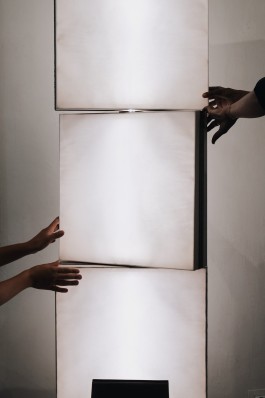Skin celebrates the interconnected relationship between fauna, tradition, music, and humanity through the art of leather making.


in collaboration with OTZI studio
Alcanena, Portugal
November 2024
Video shot and edited by James Newitt
Visit to Angelinos’ tannery, one of the very few in the country that is specialized in vegetable tanning and maintains traditional tanning methods and century old steam engine run machines.
A deep dive into the leather industry led us to uncover an overlap of craft appreciation and a unique cultural expression — woven into industry, womanhood, musical expression and design.
The sound of the Adufeiras of Idanha




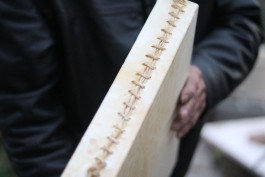




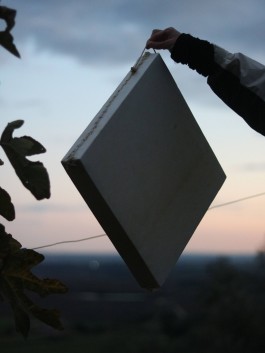



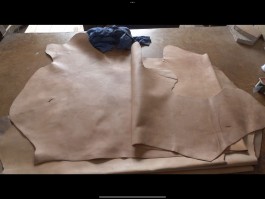




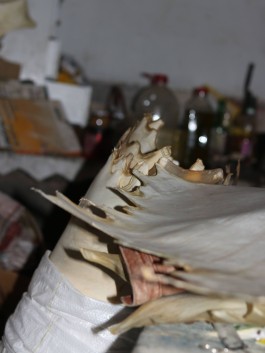

MACHEIA 2025






in collaboration with OTZI studio
Skin celebrates the interconnected relationship between fauna, tradition, music, and humanity through the art of leather making.
Alcanena, Portugal
November 2024
Video shot and edited by James Newitt
Visit to Angelinos’ tannery, one of the very few in the country that is specialized in vegetable tanning and maintains traditional tanning methods and century old steam engine run machines.
Manifesto
"Skin celebrates the interconnected relationship between fauna, tradition, music, and humanity through the art of leather making. A deep dive into the leather industry led us to uncover an overlap of craft appreciation and a unique cultural expression—woven into industry, womanhood, musical expression and design."
_
"Skin celebrates the interconnected relationship between fauna, tradition, music, and humanity through the art of leather making. A deep dive into the leather industry led us to uncover an overlap of craft appreciation and a unique cultural expression—woven into industry, womanhood, musical expression and design."
Leather is one of the most ancient crafts to ever exist.
It represents an age-old survival gesture of taking advantage of our resources as hunters and gatherers turning skins and hides into shelter, protection and safety.
Leather making and the tanning process has to be one of the most ingenious, both rudimental and technological ways of transforming a raw material, keeping some invaluable characteristics such as flexibility, elasticity and durability. In fact, it goes beyond durability, the way it ages to become something better than its first version.
Leather is a by-product of the meat industry.
The leather industry has been hiding behind this statement which, while truthful in the majority of the cases, narrows the narrative surrounding the industry into a waste-free, ecological and sustainable industry. This is unfortunately untrue in the majority of circumstances. There are many ways in which leather can be sustainable: from the agriculture conditions the livestock is raised, handled and slaughtered; in the usage of local hides in the tanning process; to the integral usage of the cattle’s parts to various industries; to the way hides are tanned - the tanning process can be very energy efficient and overall clean, tannins can be vegetable and locally sourced; to the way leather is finished with non-polluting coats so its circular and biodegradable. Sustainability also encompases fair pay in all stages of production and overall sane and safe work conditions. More on leather sustainability in our interview with Alice V. Robinson.
Our relationship with leather and culture
Leather became a material so familiar and close to us, yet, we maintain a strange relationship to its production.
Historically, our uses of leather spanned from capes and clothing, to shoes, storage accessories and handles, equestrian accessories, boats, bags, furniture and design, teepees, stationary and book binding, musical instruments. The list goes on and on.
Through the many facets on how we transformed leather to fit our daily needs, it became a core expression of identity and culture. There are many associations we make when we think of the word leather and many cultures around the world have specialized in different expressions.
As designers invested in culture and the sense of locality, when we first approached leather it was natural for us to research what is the relationship between Leather and Portugal. We were not ready for such a vast venture. Portugal was once one of the most important leather producers in Europe, exporting very unique technologies in the shoe making industry, more specifically in sole making.
We were also drawn to other uses of leather that were not the obvious ones to us such as book binding and musical instruments. We got fascinated by the way leather permeates all senses: touch, vision, smell and sound.
It was when we started mapping the senses we found Adufe. An instrument that became the centre of our research for encompassing many of the issues we wanted to communicate.
Adufe is a Portuguese frame-drum instrument played almost exclusively by women in various parts of the country, accompanied by hymns of praise to love, to the land and to work in the fields.
_
A chat with
Alice Robinson
Back in November 2024, we visited Alice V Robinson.
We first discovered Alice’s work through her book “Field, Fork and Fashion: Bullock 374 and a Designer’s Journey to Find a Future for Leather” and it was a great a-ha moment as she had already connected what we had began to discover: leather and agriculture, embracing imperfections, the fashion industry’s relationship with sustainability.
She has currently been focusing her time in British Pasteur Leather, a project she co-founded with Sara Grady that wishes to bring high quality traceable leather produced in the UK through regenerative agriculture.
_
A chat with
Alice Robinson
Back in November 2024, we visited Alice V Robinson.
We first discovered Alice’s work through her book “Field, Fork and Fashion: Bullock 374 and a Designer’s Journey to Find a Future for Leather” and it was a great a-ha moment as she had already connected what we had began to discover: leather and agriculture, embracing imperfections, the fashion industry’s relationship with sustainability.
She has currently been focusing her time in British Pasteur Leather, a project she co-founded with Sara Grady that wishes to bring high quality traceable leather produced in the UK through regenerative agriculture.
Tell us about British Pasture Leather and why do we need to know where our leather comes from and what processes it undergoes?
British Pasture Leather was born out of a desire to have transparency and connection to the farming communities in which it originated, and value leather as a product of our food system. My business partner, Sara Grady and I, often comment that not all leather is created equally. The leather supply chain is global and complex. We produce leather from the hides of cattle
reared on farms certified by Pasture for Life. Traceability to agriculture provides us with a vital connection, accountability and insight into the impacts of our materials and the food system they originate in. We work closely with partners in the leather supply chain to ensure that traceability is retained on these certified hides. We do this by purchasing hides directly from abattoirs and then contracting all stages of tanning and finishing in the UK. We preference a vegetable tanning method, not using polyurethanes or plastics and making considered choices in all stages of production. The result is a beautiful 100% vegetable tanned leather suitable to a range of applications including footwear, accessories and furniture.
Is leather a sustainable material? In what ways can we ensure its sustainability?
In my work now and before British Pasture Leather, I was keen to look beyond the dominant narrative that leather is inherently sustainable because hides are deemed a ‘waste’ or ‘byproduct’ by the meat industry. We can ensure its sustainability when we look at the whole picture, from the farming practices in which it originated, the food system it has been produced by and the manufacturing it has undergone. I think context is really important. If we view leather as something separate from agriculture it removes the opportunity to support a transition to a regenerative model of consumption. We can ensure its sustainability when we look at its entire
life cycle, from raw material through to design. As a designer leather is a beautiful material to work with. I have experienced that people producing leather have a great appreciation for the unique qualities and ingenuity of it as a natural material. Those skilled crafts people are passionate about leather as a material that has been entwined with human development. Championing its natural genius through design, making items to keep for a long time, repair and love is one way to ensure leathers sustainability.
The industry has many working groups and certifications to support users of leather and brands to source sustainably. These include the Leather Working Group, Sustainable Leather Foundation and the Textile Exchange.
What’s the biggest challenge when it comes to sustainable leather?
Leather can be created in many different ways, each with varying levels of sustainability. For instance, there are many methods of producing leather which results in a material that is durable, versatile, repairable and depending how it has been produced it can be entirely biodegradable and circular. One challenge is that a huge majority of leather today has a coating of plastic on it, or has been heavily finished, these techniques are used to meet brands and customers performance expectations. These are rather genius approaches to creating better cutting yields to reduce waste and enable mass manufacturing of identical products. The consequence is lack of tolerance for natural character, viewing it as a flaw to be ‘corrected’ to meet industry standards. Beyond this I believe leather’s sustainability has to do with fairness and equity along the supply chain. I believe we need to look at leathers sustainability holistically, beginning with the farm level and continuing with the same mindset in the approach to production to manufacture and design. Although there are many challenges within this - globally complex supply chains, consumer’ perceptions to quality needing to shift - reframing leather as a material connected to local landscapes, communities, soil health, ecosystem restoration presents opportunities for new collaboration, storytelling and education.
What’s the role of the end consumer towards a shift in the leather industry?
The leather has taken a huge hit with the rise of plastics and leather like materials. People can now access products that aesthetically imitate leather, often without the price implication of the real thing. Often these products don’t last as long and are made from petrochemicals. I think education is really important. As a leather goods designer at RCA I was presented with eather to work with and I had so many questions, of which I could find no answers regarding traceability, impact, connection. Many of the reasons I was hesitant to work with the material was because of its obscurity and association with industrial agriculture and those negative associated impacts. I think all of us have a responsibility to be curious, ask questions and hold brands accountable to their purchasing practices.
If there would be one adjective to describe leather, which one would it be?
Storyteller (Storytelling)
_
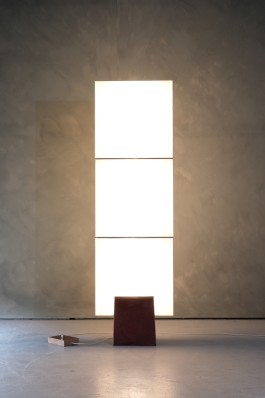



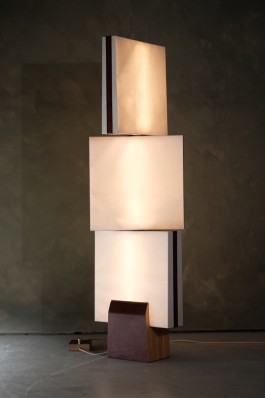
Coro Lamp
in collaboration with OTZI Studio
The Coro Lamp tells the story of the Adufe — a Portuguese frame drum that is inherently feminine and social. Traditionally played by women across the country, it accompanies hymns of love, devotion to the land, and the rhythms of rural life, sung and played in unison with a single melodic line.
Telling the story of the Adufe felt natural within the context of our research into leather and its intersections with culture, craftsmanship, and the senses. The Adufe emerged as a poetic convergence of these three realms, evoking three senses intimately tied to leather: sight, touch, and sound.
The instrument is crafted from a simple wooden frame and stretched goatskin, covering both sides to create a deep, solemn resonance.The Coro Lamp features calfskin vellum from William Cowley—some of the finest available—chosen to express the unique transparency that hides can offer. Its accents and grounding elements include smoked oak and Australian Nut-finished leather, crafted by J. & J. F. Baker, Britain’s only remaining traditional oak bark tannery.
Through the hands of OTZI Studio, the lamp becomes a celebration of craftsmanship, illustrating how the same raw material—calfs hide—can embody two distinct yet equally refined expressions: vellum and leather.
Materials: Calfskin Vellum, Smoked oak, Oak bark tanned leather, brass
Dimensions: H 180 x L 45 x W 25
Manufactured by OTZI Studio
The sound of the Adufeiras of Idanha





















